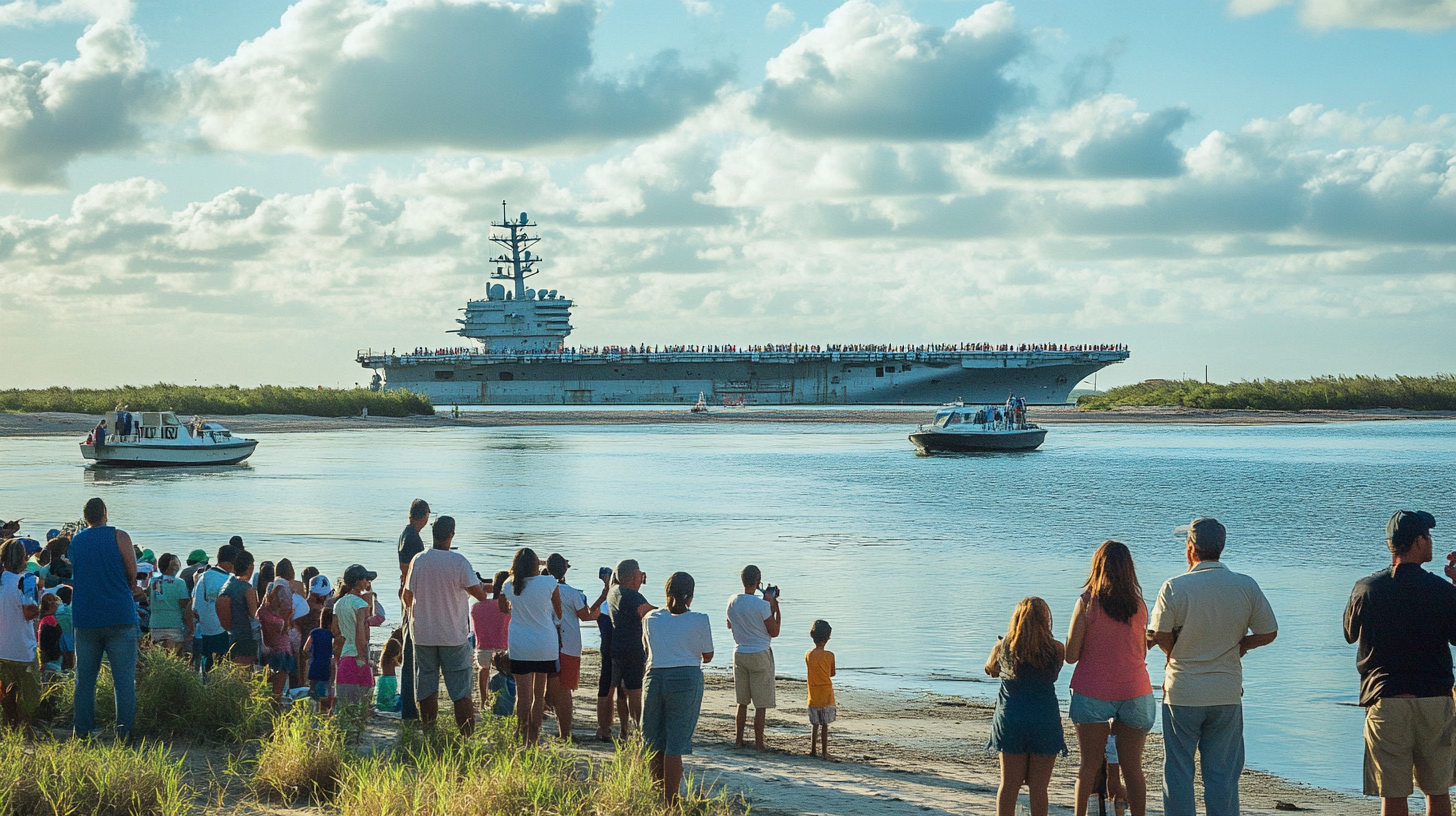**The Arrival of Nostalgia: USS JFK Docks at Port of Brownsville for Its Final Chapter**
A piece of naval history sailed into the Rio Grande Valley this past weekend, drawing the gaze and reflections of thousands of spectators. The former USS JFK (CV-67), a retired aircraft carrier, anchored at the Port of Brownsville, marking the end of its 17-day journey from the Philadelphia Naval Yard. Nicknamed “The Big John,” this monumental vessel’s final approach was met by a diverse crowd, many of them former crew members and veterans, alongside Valley residents and maritime enthusiasts.
**A Storied Past**
Commissioned in 1968 during a period of global tension and changing naval warfare, the USS JFK played a vital role in 18 deployments, including significant operations in the Mediterranean and Adriatic Seas. It offered a floating home and operations hub for up to 5,000 sailors at a time. As the last conventionally powered aircraft carrier built by the U.S. Navy, it stood as a testament to maritime engineering and strategic prowess.
The ship was sold in 2001, alongside USS Kitty Hawk, for a symbolic one cent to International Shipbreaking Limited, tasked with dismantling and recycling retired naval vessels. The USS JFK was decommissioned in 2007 after nearly four decades of service.
**Witnessing the Last Voyage**
Isla Blanca Park on South Padre Island transformed into a living gallery, where the past echoed through stories shared by veterans and spectators. Thomas Burns, reflecting on the ship’s thick military heritage, mentioned a notable event in his tenure. “I was aboard when we collided with USS Belknap in 1975—on the anniversary of President Kennedy’s assassination, no less. It’s a memory etched in my service.”
Marcus Klein, retired now, recollected that his naval career kickstarted aboard the USS JFK. “CV-67 was my initial station after boot camp. Witnessing its final journey here makes me ponder my journey from a sailor to a veteran on New Year’s Eve,” he said thoughtfully.
**Local Angle and Community Impact**
For Valley residents, such events bring not only historical narratives but also economic implications. International Shipbreaking Limited operates within the Freeport area, providing jobs and contributing to the local economy. The dismantling of naval giants like the USS JFK also involves recycling metal and materials which has a positive environmental impact through resource reutilization.
Javier Martinez, a local economic analyst, pointed out the broader implications. “Shipbreaking is a significant part of Brownsville’s industrial fabric. It involves a skilled workforce and supports ancillary businesses. The USS JFK’s arrival is more than a historical gesture; it’s a reassuring reminder of how history, labor, and industry interconnect to bolster local economies in South Texas.”
**Potential and Prospects**
While the arrival of the USS JFK brings immediate economic activity, it also accentuates the region’s strategic location within maritime logistics. Experts believe its dismantling will strengthen the region’s capacity in handling similar projects, setting a precedent for future naval decommissioning options.
Moreover, it revitalizes local culture and identity, seen in the waves of nostalgia washing over attendees. The scenic South Texas coast, known for its vibrant culture and community spirit, becomes a backdrop for unfolding historical chapters.
**Addressing Broader Context**
While the arrival was unannounced by the Navy, leaving an element of surprise, it aligns with other regional activities celebrating maritime history. Judging by the turnout, such events are not isolated as they weave into larger conversations around industrial diversification and cultural preservation strategies.
Consequently, local administrations, real estate developers, and historical societies need to leverage such engagements to attract tourism and provide educational value. Ensuring Valley residents are recognized for their integral part in these narratives will nurture wider community pride.
**Citizen Resources and Participation**
For Valley residents keen to engage with this historical moment, the Port of Brownsville and International Shipbreaking have confirmed plans for public tours and educational programs. Local schools and historical societies have expressed interest in weaving the narrative of USS JFK into educational materials, promising a multi-generational dialogue about heritage and history.
In conclusion, the USS JFK’s final journey encapsulates both historical nostalgia and future potential for Brownsville and the wider RGV community. It depicts not just the end of a vessel’s lifecycle but signals a continuation of industrial resilience and cultural connectedness with the sea—a reminder that the past informs the present while anchoring towards future horizons.







